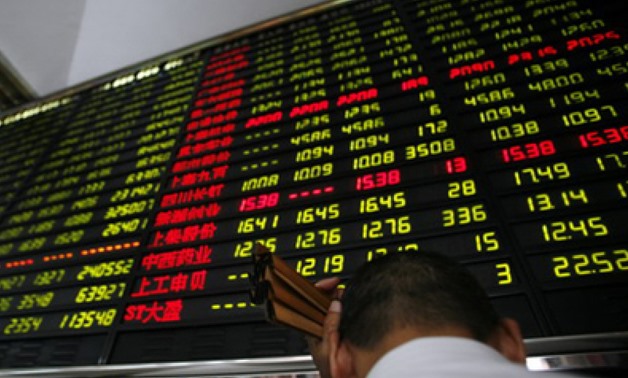
stocks - Creative Commons
LONDON - 7 June 2018: World stocks hit a three-week high on Thursday and the euro and German Bund yields also rose as investors priced in a potentially earlier-than-expected wind-down of stimulus from the European Central Bank.
The selloff in safe-haven Bunds drove money into riskier assets, especially financial stocks, despite investors’ anxiety over how a G7 leaders summit that kicks off on Friday will pan out in view of global trade concerns.
Bank stocks, which tend to gain from higher bond yields, drove European shares up in early trade. The pan-European banks index .SX7P jumped 1.4 percent, helping the STOXX 600 .STOXX gain 0.5 percent.
Banks remain the worst-performing sector in Europe year-to-date, however, having been dented by a selloff triggered by political risk in Italy.
MSCI’s index of world stocks .MIWD00000PUS rose 0.3 percent to its highest since May 14, helped by Asian shares which climbed to an 11-week high overnight.
The euro EUR= and Germany’s benchmark 10-year bond DE10YT=TWEB both climbed on signs that the ECB could soon call an end to its stimulus programme.
The bank’s Chief Economist Peter Praet said on Wednesday that robust growth made it increasingly confident that inflation was on its way back to target, raising chances it may reveal more about the end of the bond-buying programme at its meeting next week.
Praet’s comments took the market by surprise, given a recent slowdown in the euro zone economy.
The euro hit its highest level since May 15 at $1.1838, and traded up 0.4 percent at $1.1824 by 0920 GMT. The common currency’s rise helped drive the dollar index .DXY down 0.3 percent to 93.399.
German Bund yields DE10YT=RR rose above 0.50 percent for the first time in two weeks. The 10-year U.S. Treasury yield US10YT=RR moderated its rise slightly, having hit a 1-1/2-week peak of 2.985 percent on Wednesday.
Data on Thursday showed German industrial orders plunged unexpectedly in April, a fourth consecutive monthly drop.
“It’s a complex backdrop where ultimately the economy is not doing badly, but the economic surprises in Europe have not been to the upside,” said Antoine Lesne, head of EMEA strategy and research at State Street’s SPDR ETF.
“Bad momentum has eased the overall backdrop the ECB is navigating - but if you’re looking at the broader macro picture it is still positive for risk assets.”
To view a graphic on Euro and Bund yields June 7, click: reut.rs/2JrJPXC
POLITICAL RISK
The risk-on moves across markets coincided with a calendar of potentially destabilising political events.
The run-up to the G7 summit has been dominated by a widening divide over trade between U.S. President Trump and the club’s remaining six members.
But gauges of investor anxiety, including stock volatility, showed no signs of strain.
The VIX, which measures volatility on the S&P 500 .VIX, was last trading flat at 11.64. It has fallen from more than 50 to less than 12 in just 83 days - a record decline, traders said.
“It’s a surprise to say the least that it’s coming back down so quickly,” said SPDR ETF’s Lesne.
Investors chose to focus instead on a still supportive global economy which was fuelling demand for commodities.
Oil prices rose, shaking off some of the previous session’s losses as plunging exports from OPEC member Venezuela crimped supply in the market.
Brent crude futures LCOc1 traded up 0.4 percent at $75.65 a barrel and U.S. West Texas Intermediate (WTI) crude CLc1 up 0.3 percent at $64.92.
Copper CMCU3 hit its highest level this year at $7,295 per tonne, driven by supply concerns over disruption at the Escondida mine in Chile. It was on track for its sixth straight day of gains, its longest run since December.
Gold prices edged higher, with spot gold XAU= trading at $1,297 per ounce, up 0.2 percent.
In emerging markets, stocks .MSCIEF climbed 0.5 percent to a three-week high, supported by the weaker dollar.

Comments
Leave a Comment